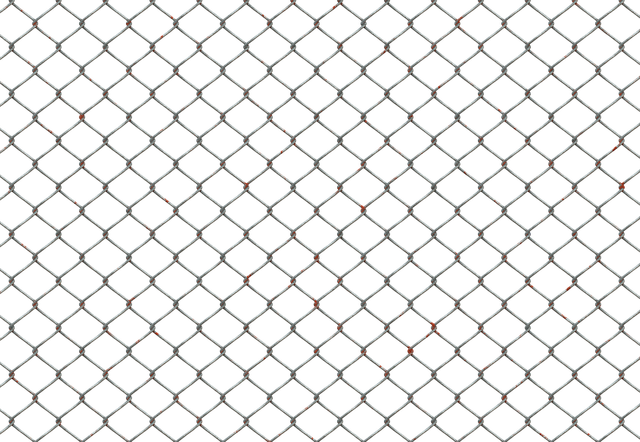In New Bedford, MA, transforming your outdoor space starts with a robust vinyl fence. This comprehensive guide navigates the process from initial conception to final installation, empowering homeowners like you to make informed decisions. We explore crucial aspects such as understanding local regulations, selecting the right contractor for your project, designing custom layouts, and preparing for installation. Get ready to transform your yard into a beautifully fenced oasis with our step-by-step insights.
- Understanding Vinyl Fence Installation in New Bedford
- Choosing the Right Contractor for Your Project
- Designing Your Ideal Fence Layout
- Preparation and Permits: What to Expect
- Installation Process: Step-by-Step Guide
- Post-Installation Maintenance Tips
Understanding Vinyl Fence Installation in New Bedford
In New Bedford, MA, vinyl fence installation has become a popular choice for homeowners and businesses alike due to its durability, low maintenance, and aesthetic appeal. Vinyl fences are made from high-quality, long-lasting materials that resist rot, rust, and damage from extreme weather conditions, making them an excellent investment for any property. They come in various styles, colors, and designs, allowing property owners to enhance their outdoor spaces with a personalized touch.
When considering vinyl fence installation, it’s crucial to understand the process involves careful measurement, material selection, and expert craftsmanship. Professional contractors in New Bedford will first assess your property, taking into account factors like layout, local regulations, and specific design preferences. They’ll then provide tailored recommendations, ensuring the fence not only meets but exceeds your expectations while adhering to safety standards and neighborhood aesthetic guidelines.
Choosing the Right Contractor for Your Project
When choosing a vinyl fence installation contractor in New Bedford, MA, it’s crucial to select a company with a proven track record and expertise in your area. Look for contractors who specialize in vinyl fencing and can provide references or examples of their previous work. Online reviews from satisfied customers can be a great way to gauge their reliability and work quality.
Additionally, ensure the contractor offers competitive pricing, clear communication throughout the project, and adheres to local building codes and regulations. A reputable company will also carry necessary insurance to protect both your property and their workers. Meeting in person or having detailed phone conversations can help you make an informed decision and find a contractor who aligns with your project’s specific needs.
Designing Your Ideal Fence Layout
When designing your ideal fence layout, start by envisioning how the fence will enhance your outdoor space. Consider factors like privacy, aesthetics, and functionality. Do you want a sleek, modern look or a traditional, classic style? A professional contractor can help you select materials that align with your vision and withstand local weather conditions.
Sketch out different designs on paper or use online tools to visualize how the fence will fit into your yard. Think about where you’d like gates or other access points, and ensure there’s enough space for maintenance and cleaning. A well-planned layout ensures a smooth installation process and a beautiful, durable fence that serves your needs perfectly.
Preparation and Permits: What to Expect
Before starting any vinyl fence installation, thorough preparation is essential. This includes assessing the site for any potential obstacles or issues that could impact the project, such as underground utilities or uneven terrain. Clear all debris and vegetation from the area where the fence will be erected to ensure a level and stable foundation.
Obtaining necessary permits is another crucial step in the process. Homeowners should check with their local municipality or building department to understand any regulations or requirements for fence installations in their area. Permits may be needed to ensure compliance with zoning laws, property lines, and safety standards, so it’s best to obtain them before beginning construction to avoid any legal issues or delays.
Installation Process: Step-by-Step Guide
The installation process for a vinyl fence typically involves several well-defined steps to ensure a sturdy and aesthetically pleasing barrier. It begins with preparing the site, which includes marking out the perimeter and ensuring the ground is clear of obstructions. The contractor then digs holes for the posts, adjusting their depth and placement according to the design and local conditions.
Next, the posts are installed, often using concrete for stability. After the posts have set, panels or pickets (vertical boards) are attached, securing them with brackets or nails. This step requires precision to ensure the fence lines up correctly and is level. Finally, gates and hardware are fitted, allowing access points while maintaining the fence’s structural integrity.
Post-Installation Maintenance Tips
After your vinyl fence is installed, proper maintenance will ensure its longevity and aesthetic appeal. Regular cleaning with a soft brush or garden hose removes dirt and debris, preserving the fence’s vibrant color. Avoid using harsh chemicals or abrasive cleaners that could damage the vinyl.
Inspect your fence periodically for any signs of damage, such as cracks, warping, or broken panels. Promptly repairing these issues will prevent further deterioration. Lubricating the hinges and latches with a silicone-based lubricant every few months will keep them functioning smoothly, ensuring your fence remains secure and well-maintained.
